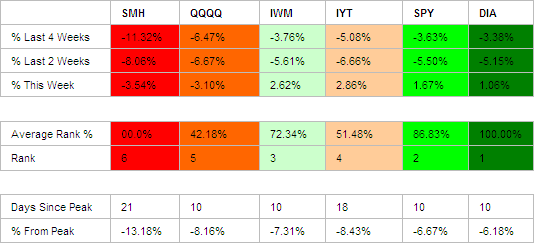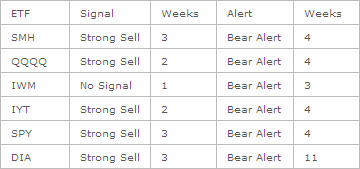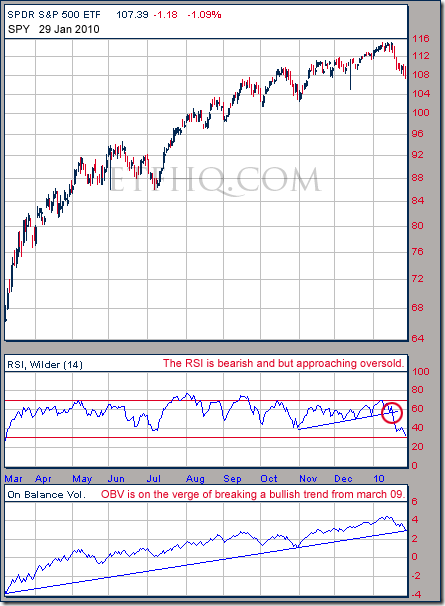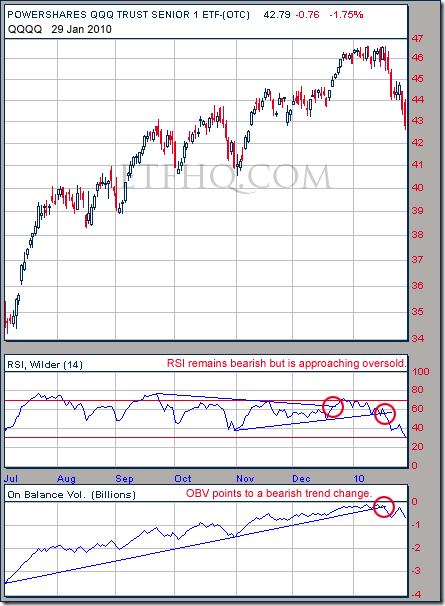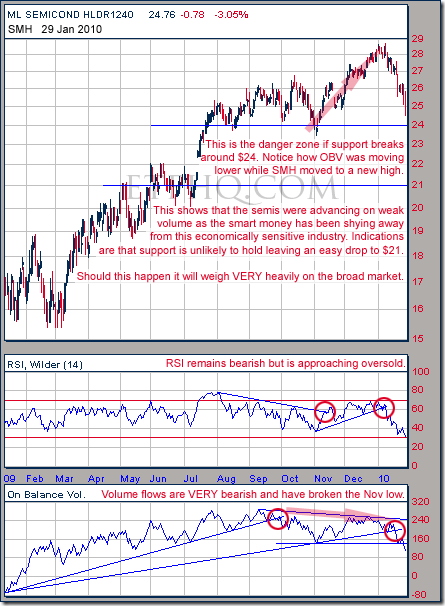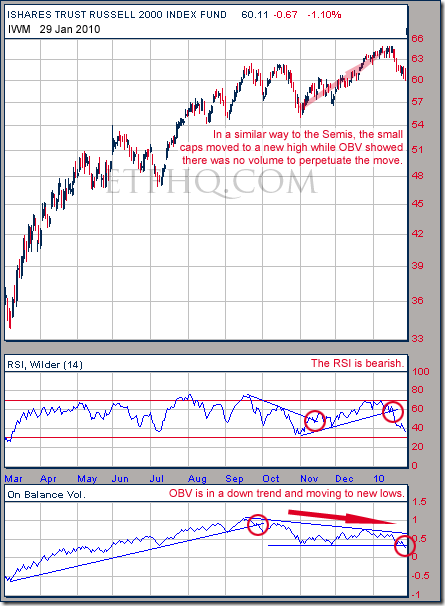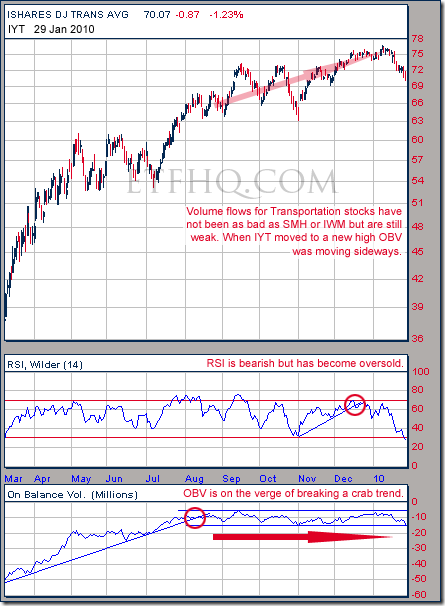February 15, 2010 – 4:15 am ET
What a fun week! The bulls saved themselves (for now), the Winter Olympics got underway, the Canadians got their first Gold at home and unless you forgot Sunday was Valentines day.
Action from the market this last week while good was not good enough to call it a return to the bullish trend. We said it was do or die for the bulls and they held their ground. However key resistance levels remain intact.
ETF % Change Comparison

It was an undeniably impressive week from all of the economically sensitive ETFs while the more stable SPY and DIA lagged behind which is a very positive sign. Notice how SMH is now the top performer over the 1 week, 2 week and 4 week time periods but has still declined the most from its peak 35 days ago? This points to the possibility that SMH has bounced the hardest because it was the most oversold. Fortunately the charts hold the answer.
What the % Comparison Table Tells Us:
By comparing the performance of the economically sensitive (SMH, QQQQ, IWM, IYT) and the comparatively stable ETFs (SPY and DIA) we can get an indication of the true market direction. The more sensitive areas of the market tend to be the first to initiate a trend change. For example if DIA and SPY sell off heavily while SMH and IWM (Russell 2000 small cap ETF) sell of mildly or continue moving to new highs then this would be very positive and vice versa.
The ‘Average Rank %’ is calculated by subtracting the % change for each ETF from the maximum % change and dividing it by the range for each period. 1-((MAX(% change all ETFs)-ETFs % Change)/(MAX(% change all ETFs)-MIN(% change all ETFs))) The readings for each period are then averaged. This reading is provided because if one ETF was significantly under/out performing the others then a plain high or low rank would not accurately reflect this.
.
![]()
.
A Look at the Charts
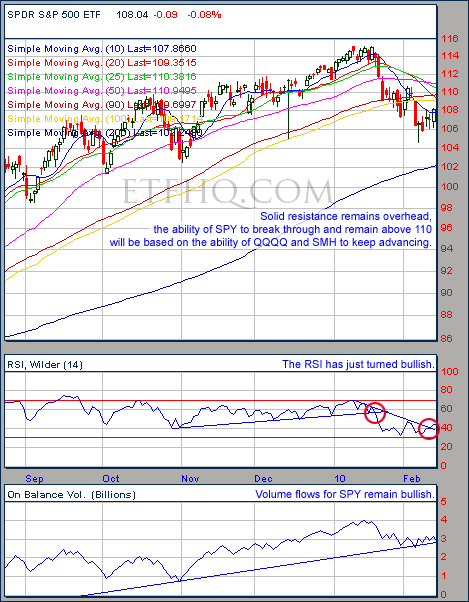
When assessing SPY on its own things looks good; the volume trend from the bottom of the market remains intact and the RSI has just turned bullish. If SPY is to break through resistance however it will require the likes of QQQQ and SMH to to lead the way.
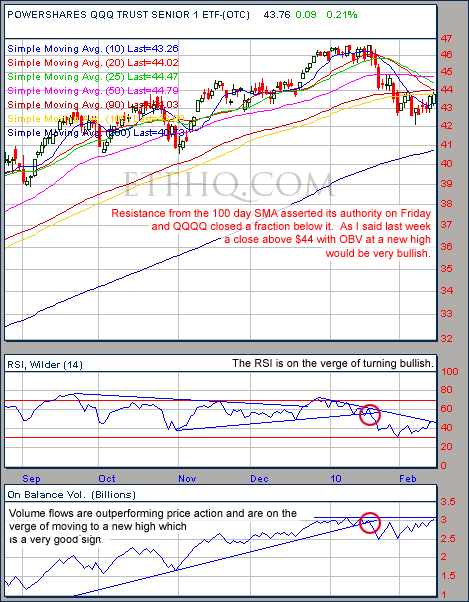
QQQQ is also looking good but SMH and IWM offer a clearer picture.
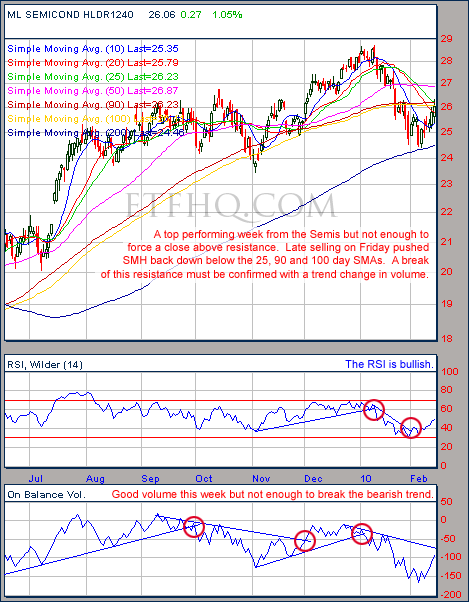
I love the semis, not just because they tend to lead the market revealing its true direction but because they so often provide a clearer technical picture. After a solid week SMH has found resistance as expected from the 100 day SMA, if this level is broken and confirmed by a trend change in volume this would be very bullish.
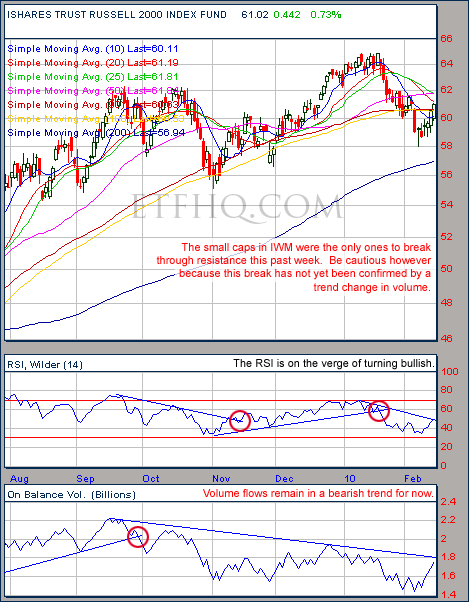
IWM has already broken through resistance but needs volume to confirm the trend change. If both SMH and IWM can do this then a return to the bull market is likely.
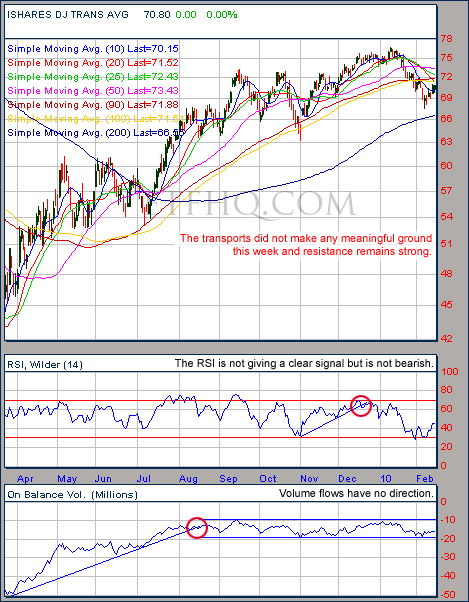
IYT still has strong resistance to break through but is not currently offering much information of value.
.
![]()
.
OM3 Weekly Indicator

IWM turned to a ‘Strong Buy’ on Friday but rather strangely is still showing a bear alert which is most likely due to internal weakness. Other than that all the ETFs remain on ‘Sell’ signals.
.
How to read the OM3 indicator
The OM3 indicator as with most of our models primarily reads price action and volume. The strong/weak buy/sell signals are self-explanatory. ‘No Signal’ means that the component readings are in conflict and cancel each other out.
The alerts let you know if the cycle is speeding up or slowing down, so when you get at ‘Strong Buy, Bear Alert’ for instance it simply means that the criteria for a strong buy is still in place but this weeks reading is weaker (or more bearish) than last weeks reading (the same is true in reverse).
The number of weeks that a signal has been repeated is displayed. Historically a ‘Strong Buy’ signal has lasted for an average of 6 weeks and a maximum of 42 weeks, while a ‘Strong Sell’ has lasted for an average of 4 weeks and a maximum of 16.
This is an indicator not a mechanical trading model. It is useful to assist in analyzing the market but for the best results should be combined with commonsense and support/resistance levels etc.
.
![]()
.
TransDow & NasDow

The Dow remains dominant over both the Transports and the NASDAQ. Statistically this indicates a hightened level of risk in the market.
.
What the TransDow Readings tell us:
The TransDow measures dominance between the DJ Transportation Index (DJTI) and the Dow Jones Industrial Average (DJIA). In a strong market the more economically sensitive Transportation Index should be dominant over the DJIA.
Historically the DJTI has been dominant over the Dow 45% of the time. The annualized rate of return from the DJTI during this period was 18.47% with the biggest loss for one trade sitting at -13.27%. The annualized rate on the DJIA during the periods it was dominant over the DJTI was just 4.06% and the biggest loss for one trade was -16.13%. A 4% stop-loss is applied to all trades adjusting positions only at the end of the week.
What the NasDow Readings tell us:
The NasDow measures dominance between the NASDAQ and the DJIA. Using the same theory behind the Trans Dow; in a strong market the more economically NASDAQ should be dominant over the DJIA.
Historically the NASDAQ has been dominant over the DJIA 44% of the time. Taking only the trades when the NASDAQ is above its 40 week moving average the annualized rate of return was 25.47% with the biggest loss for one trade sitting at –8.59%. The annualized rate on the DJIA during the periods it was dominant over the NASDAQ is just 8.88% and the biggest loss for one trade was –12.28%. A 8% stop-loss is applied to all trades adjusting positions only at the end of the week.
.
![]()
.
LTMF 80 & Liquid Q
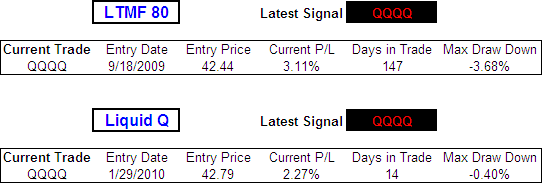
Both the LTMF 80 and Liquid Q remain on a buy signal. Both systems look to take advantage of long term trends.
Historical Stats:

.
![]()
.
Summary
Really not a lot has changed over the last week; support held and resistance is yet to be broken. Key things to look for this coming week to indicate a return to the bull market are:
- New high from OBV on QQQQ
- Close by QQQQ above $44
- Close by SMH above its 90 day SMA
- OBV Bullish trend change on SMH
- OBV Bullish trend change on IWM
Until all of these key things have happened, the risk remains to the downside.
Any disputes, questions, queries… comments or theories are most welcome below.
Best Regards
.
Derry
And the Team @ ETF HQ
.
P.S I love the Olympics and think this video captures the spirit of the games brilliantly:
.
![]()
.
Quote Of The Day
“To succeed as a trader, it is absolutely necessary to have an edge. You can’t win without an edge, even with the world’s greatest discipline and money management skills. If you don’t have an edge, all that money management and discipline will do for you is to guarantee that you will gradually bleed to death. Incidentally, if you don’t know what your edge is, you don’t have one.”
– Jack Schwager

